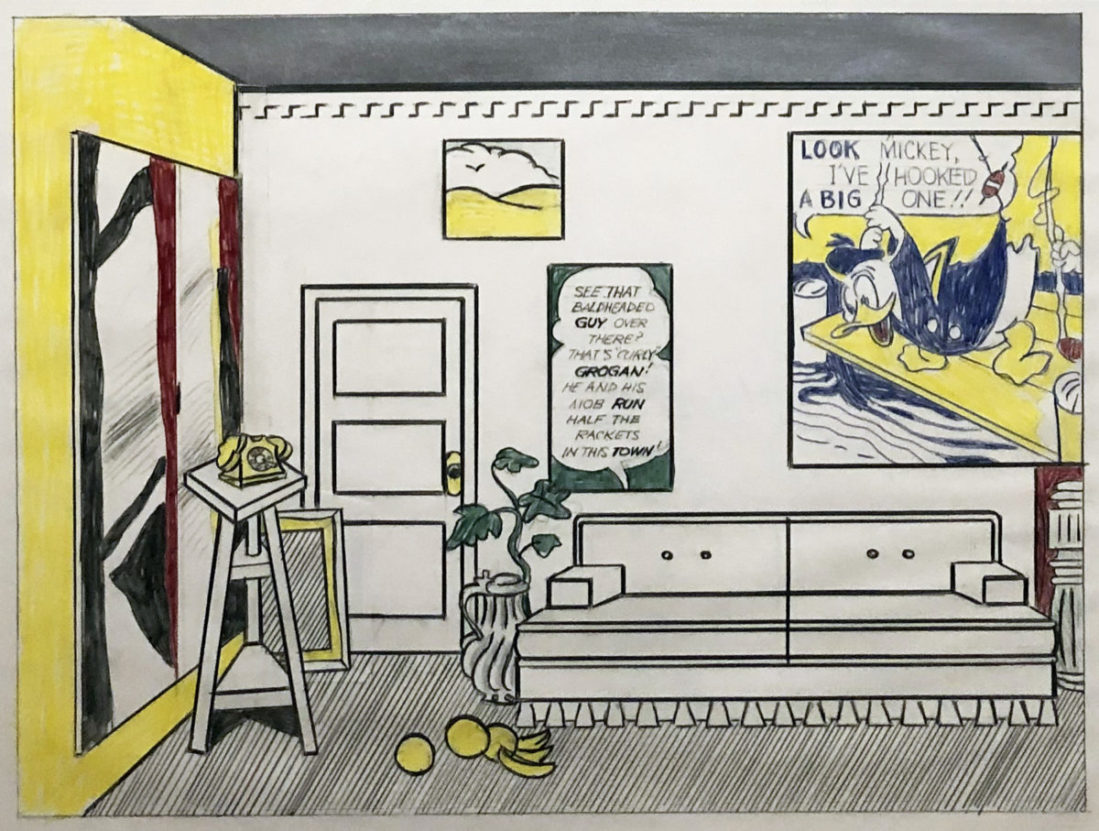
By Helen A. Harrison
In June 2018, the Whitney Museum of American Art announced the establishment of the Roy Lichtenstein Study Collection, created by the Roy Lichtenstein Foundation’s gift of more than 400 of his works in all media spanning his entire career. Among the themes represented in depth is architectural ornamentation, specifically the motifs the artist observed on building façades in downtown Manhattan and adapted in numerous paintings and prints, primarily in the 1970s. Beyond their implicit commentary on cultural appropriation and ironic take on the symbolism of what Lichtenstein called “imperial power,” on an aesthetic level they were his response to Minimalism, which prompted him to simplify his imagery. A selection of works on paper from that series is the subject of the Study Collection’s first exhibition, “Order and Ornament: Roy Lichtenstein’s Entablatures,” on view through April 2020.
The show took me back to the winter of 1979, when I reviewed “Roy Lichtenstein: Mirrors and Entablatures,” organized by Lawrence Alloway at what was then the Fine Arts Center Gallery at Stony Brook University. Those two series are the most abstract of Lichtenstein’s mature works. As I wrote then, “they are abstract in the orthodox meaning of the term, in that they express the essential qualities of the subjects they represent.” In fact they are doubly abstract, since he was using familiar visual symbolism from popular culture, in effect re-processing already essentialized forms. While, like much of his imagery, the mirrors are derived from magazine illustrations, the entablatures are based on direct observation, as documented at the Whitney in a group of his photographs of dentils, egg-and-dart friezes, Greek frets and other ornamental elements of neo-classical architecture.
The earliest example in which an entablature appears actually does come from a printed source illustrating a genuine antique structure. “Temple,” a 1964 lithograph, was inspired by a postcard of the Temple of Apollo ruins at Corinth, on which the triglyph and metope frieze is badly deteriorated. Beginning in the early 1970s, however, Lichtenstein focused on entablature details from his own pictures of modern temples of commerce in the Wall Street area. He was attracted to geometric designs, ignoring organic ones like garlands, acanthus leaves, and human figures. The crisp detailing is often emphasized by strong light and shadow contrast, which tends to flatten the motifs, further abstracting them, as in his 1971 graphite drawing of a faux keystone relief carving. The architectural stonework, evident in the nearby source photograph, is missing; only the shadows it casts are visible.
Scrapbooks containing cutouts of design illustrations, sketchbooks with many variations, and stencils used to make repeat patterns shed light on Lichtenstein’s painstaking practice of distilling and adapting the imagery, as in “Entablature X,” two variations on a close-up of the word Justitia carved on a courthouse frieze. Not only the designs themselves but also the textures of stone and concrete have been translated into graphics that contain embossing and metallic overlays. The study for “Entablature III” and the final print show how the texture was varied and drawn areas became embossment.
Most of the works on view are based on such details, but a few include classical building elements incorporated in more elaborate compositions. A study for the 1973 painting, “Artist’s Studio ‘Look Mickey,’” in which Lichtenstein quotes himself à la Matisse, features a dentillated cornice, wittily paraphrased in the couch skirt. A 1985 study for Equitable’s monumental “Mural with Blue Brushstroke,” also a pastiche of his earlier work, has three references to Greco-Roman architecture. With typical deadpan detachment, he gives equal attention to everything from a cleaning product ad and a French curve to a piece of Swiss cheese, a Doric column and an entablature.
Entablatures is only one of many themes represented in the Study Collection’s holdings, which include everything from paintings and sculpture to sketches, maquettes, and studio materials. With 26 other Lichtenstein works already in its collection, the Whitney is now the primary interpreter of the artist’s creative process from the early 1940s until his death in 1997.